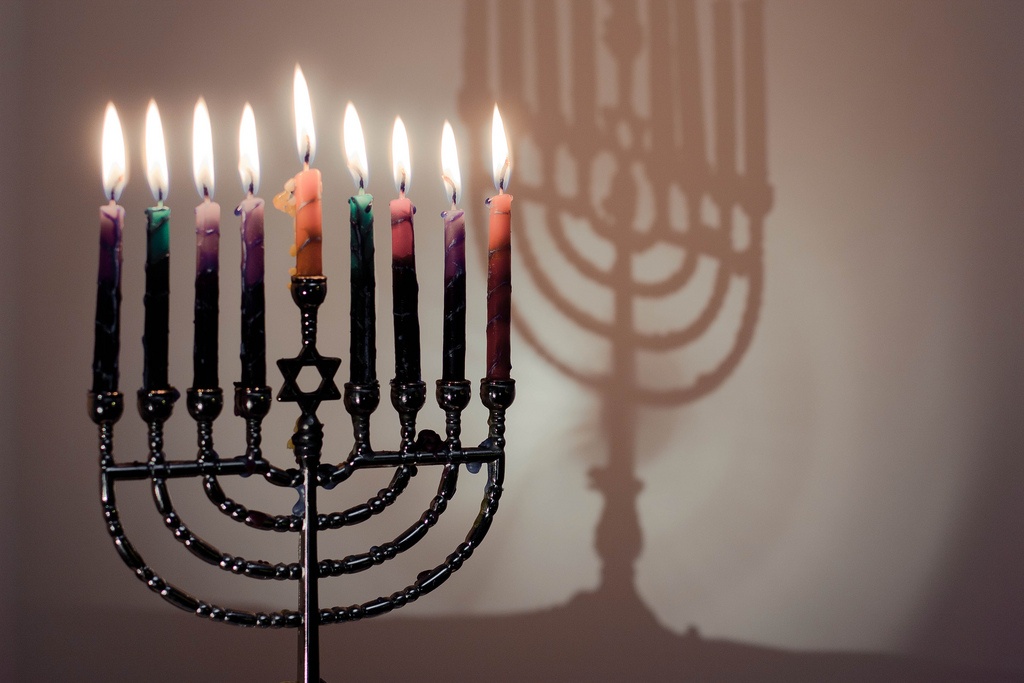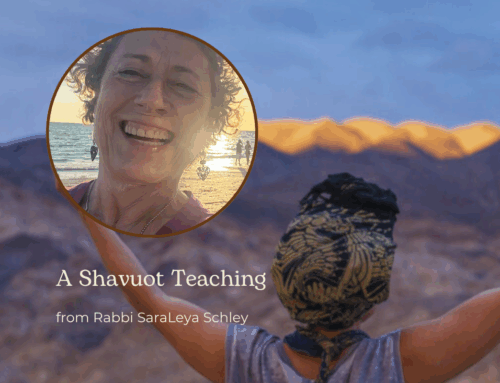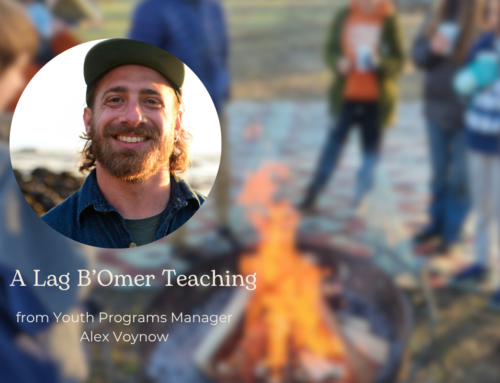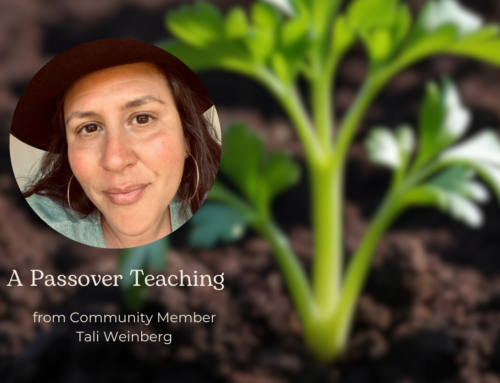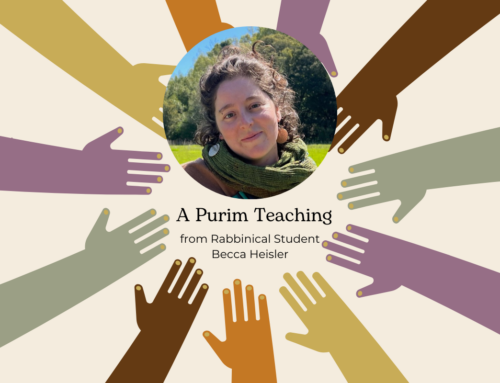Chanukah Light of Redemption
26 Kislev 5775 | December 18, 2014
In recent weeks we have witnessed fires of protest burning in the streets of Ferguson, East Jerusalem, and close to home in Oakland. As I prepare to light the Chanukah lights here in Jerusalem, I cannot help consider how the Chanukah lights reflect these fires of today.
Rabbi Moshe Chaim Luzzato (aka RaMCHaL), the great 18th century philosopher and kabbalist, teaches that when we return to a holiday date, we “return to the original light” of that day in the year. For example, on the 15th of Nissan each year we begin Passover and tap back into the energy of freedom. When we return to the 25th of Kislev each year, we tap into the powerful energies of Chanukah: victory through rebellion and the power of miracle.
Chanukah is at first a celebration of the victory of the Maccabees over the Greeks. As Rambam describes in Mishneh Torah: “In
Chanukah is also a celebration of the great miracle of light. As the Talmud recounts: “When the Greeks entered the Temple, they defiled all of the oils. After the Hasmoneans [Maccabees] defeated them, they searched and found but one cruse of oil, untouched and sealed with the seal of the High Priest. The cruse had only enough oil for one day, but a miracle occurred and they were able to light from it for eight days.” (Babylonian Talmud, Shabbat 21b). This miracle of light after one of our darkest hours, we are taught, is the last collective miracle we experienced as a Jewish people and provides an access point to the miraculous.
Today we really need such a touchstone. I arrived in Israel during the heat of the Gaza War, and after living in Jerusalem for the past five months, I can see how the ripples of the war are fraying hopes for peace – cynicism from Palestinians and Jews alike about their relations is at an all-time high. Polarization among Jews here in Israel is at an extreme. For example, renewed attempts by the Israeli Parliament to pass a “Jewish State” law – which would likely deepen the divide between Arabs and Jews – is polarizing already deeply divided factions on issues of Jewish sovereignty and Arab-Israeli inclusion, so much so that Israel’s Parliament is again on the verge of collapse. Meanwhile, Palestinian protest and violence is brewing from East Jerusalem in new waves of terrorism and civil unrest not seen here since the end of the Second Intifada nearly a decade ago. The news from Ferguson has been shocking as well and people are rising up all over the country to decry injustice — some peacefully and some violently. When speaking to long-time Jerusalemite friends, I hear a common theme: “these are dark times.” And I feel it too – the darkness is palpable; I feel I can cut it with a knife.
Chanukah offers powerful and important teachings for these dark times. In his work Ein Aya, Rav Kook, z”l, (the first Chief Rabbi of Israel) teaches that Chanukah, which literally means “rededication,” was a process of regaining access to the holiness of the Beit HaMikdash — the Holy Temple — by tapping into a connection to G!d that was hidden by the Greek defilement. Three years ago Reb Zalman, z”l, shared a sermon discussing how we can tap back into this connection:
I like to speak of it as the miraculous order that at times becomes visible to our awareness, which steadily suffuses what we call the natural order. Much of liturgy and teaching prepares us to tune into that miraculous order. Culturally, the natural order has been subverted to utilitarian purposes. The stronger that template covers the natural order the less we are in touch with the miraculous order. The ritual and liturgy connected with Chanukah and the candles are there to cleanse the doors of our perception so that we might again be attuned to the order of the miraculous. So we are taught that “…these candles and their light are sacred and we have no permission to make use of them. All we must do is to just look at them.”
(Published in Jewish Renewal Chasidis)
As the Talmud teaches, “During all eight days of Chanukah these lights are sacred, and we are not permitted to make ordinary use of them except to look at them in order to express thanks and praise to Your great Name for Your miracles, Your wonders and Your salvations.” (Sofrim 20:6). Reb Zalman further recommends, as have many of our great sages such as Reb Nachman of Breslov, “To gaze at the candles as they are in themselves the meditative contemplation we are urged to do on Chanukah.” This candle contemplation provides that touchstone, enabling us to tap into that miraculous order, which is always present and within our reach when we simply tune into it.
Chanukah provides the energetic portal; we can choose to tune in. The RaMCHaL’s description of the annual return to “light” each holiday is not a circle, however, but a spiral through time as we evolve with the lessons of the past. The resolution of the great debate between Rabbi Hillel and Rabbi Shamai on the order of lighting Chanukah candles exemplifies this. Rabbi Shamai taught that we light all eight candles on the first night; the light of the menorah decreases on each successive night symbolizing the waning of Greek philosophy, wisdom, and rule in the world. In Shamai’s view our redemption came about through the failure and defeat of the Greeks. Rabbi Hillel looked at the miracle in a different light. The victory of the Maccabees was based in our initiative and desire to bring back the presence of G!d in the Beit HaMikdash. Our redemption came through the elevation of our purpose toward holy ends. We follow Hillel today. The increasing light from each additional candle during Chanukah teaches us the path of redemption – rededication by increasing our light of wisdom and holiness over time.
Where our original Chanukah victory came with fires of zealotry, perhaps we are now more poised to tap into the power of victory through a rededication that include tolerance and a deeper understanding of the true nature of darkness and light. By the simple act of lighting the wick, we bring light into the dark and a a simple breeze can return the darkness. What we perceive as darkness and light are not so far apart.
So too it is with those who we perceive as being so different from ourselves, those from whom we seek victory. Whether in politics, race relations, or religious differences, I pray that we understand that the other is closer than we can see with our utilitarian eyes. Where the heroic Maccabees redeemed with zealotry, let us work for redemption with our evolved consciousness. Let us perceive the miraculous order this Chanukah by bringing the holy light into these dark times, and let our prayers and our initiatives aim toward a redemption that bridges the burning fires — those in the streets and those in our hearts — and transform flames of revolt into miraculous flames that bring the victory of peace, justice, and harmony in our time.
Photo Credit: “The 8th Night” by Dov Harrington
Originally posted to Flickr as The 8th Night. Licensed under CC BY 2.0 via Wikimedia Commons

